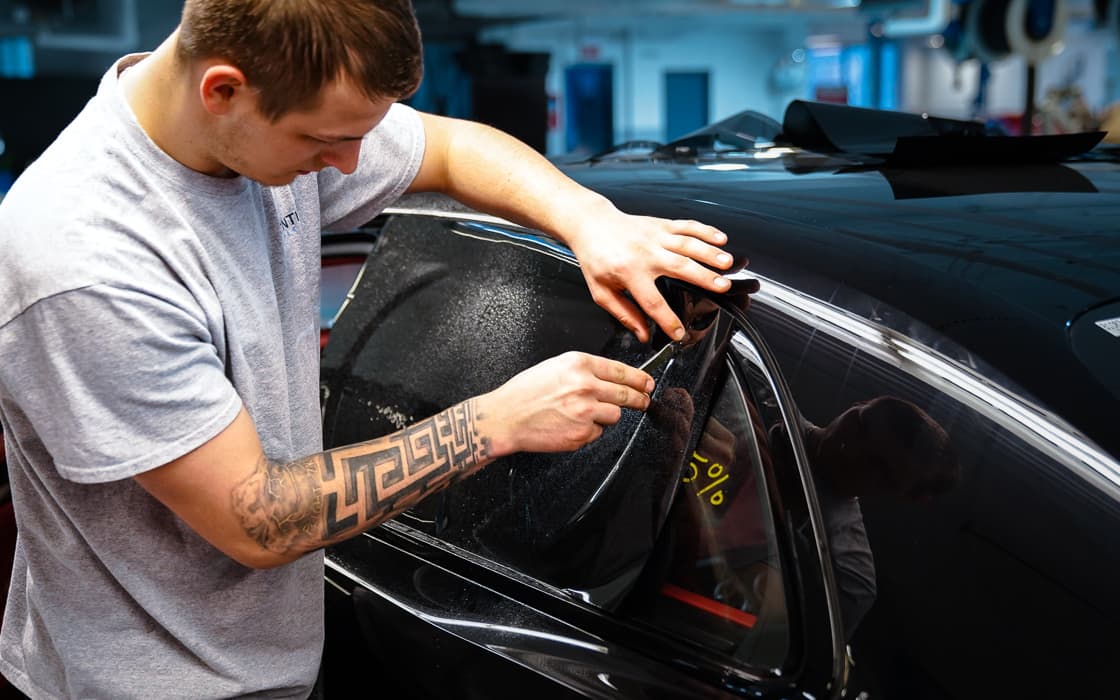What Is Nano Ceramic Car Window Tint and How Does It Work?
Nano ceramic car window tint is a type of window film that is made using advanced ceramic technology. It is designed to provide superior heat rejection,
glare reduction, and UV protection for ceramic tinting vehicles. Nano ceramic films are made using multiple layers of ceramic nanoparticles that are infused into a clear, polyester film.
The nanoparticles in nano ceramic window tint are incredibly small:
typically measuring less than 50 nanometers in diameter. These tiny particles are able to scatter and absorb a wide range of light waves,
including infrared (IR) and ultraviolet (UV) radiation, which are the primary sources of heat and UV damage.
When installed on a car window:
nano ceramic window tint forms a protective barrier that blocks up to 99% of the sun's harmful UV rays and up to 80% of the sun's heat,
while still allowing visible light to pass through. The ceramic particles also help to reduce glare and improve the overall clarity of the view through the window.
Overall, nano ceramic window tint offers a range of benefits for vehicle owners:
including improved comfort, increased privacy, and protection from UV damage. It can also help to reduce the load on
a vehicle's air conditioning system, resulting in improved fuel efficiency and reduced wear and tear on the car's components.
A Bit of the Science Behind Nano-Ceramic Car Window Tint:
Nano-ceramic car window tint is a type of window film that is applied to the windows of a car. It is made up of tiny ceramic particles that are suspended in a layer of adhesive,
which is then applied to the glass. The ceramic particles are so small that they are measured in nanometers, hence the name "nano-ceramic."
The science behind nano-ceramic car window tint is based on the properties of ceramics:
Ceramics are materials that are known for their hardness, durability, and heat resistance. When these properties are combined with the adhesive layer, it creates a window film that can effectively block out heat and UV radiation.
One of the key benefits of nano-ceramic window tint is its ability to block out heat:
This is achieved through a process called infrared (IR) rejection. IR radiation is a type of heat radiation that is emitted by the sun.
When it passes through the window, it is absorbed by the ceramic particles in the window tint, which then dissipate the heat into the surrounding air. This keeps the interior of the car cool and comfortable, even on hot days.
Another benefit of nano-ceramic window tint is its ability to block out UV radiation:
UV radiation is a type of electromagnetic radiation that is emitted by the sun. It is responsible for causing sunburns, skin cancer, and premature aging of the skin.
When UV radiation passes through the window, it is absorbed by the ceramic particles in the window tint, which then block it from entering the car. This helps to protect the occupants of the car from the harmful effects of UV radiation.
Overall, nano-ceramic car window tint is an advanced window film:
that provides superior heat and tinting UV radiation blocking capabilities. It is based on the properties of ceramics and the science of infrared and UV radiation,
making it an effective solution for keeping the interior of a car cool and protected from harmful radiation.

Comments
Post a Comment